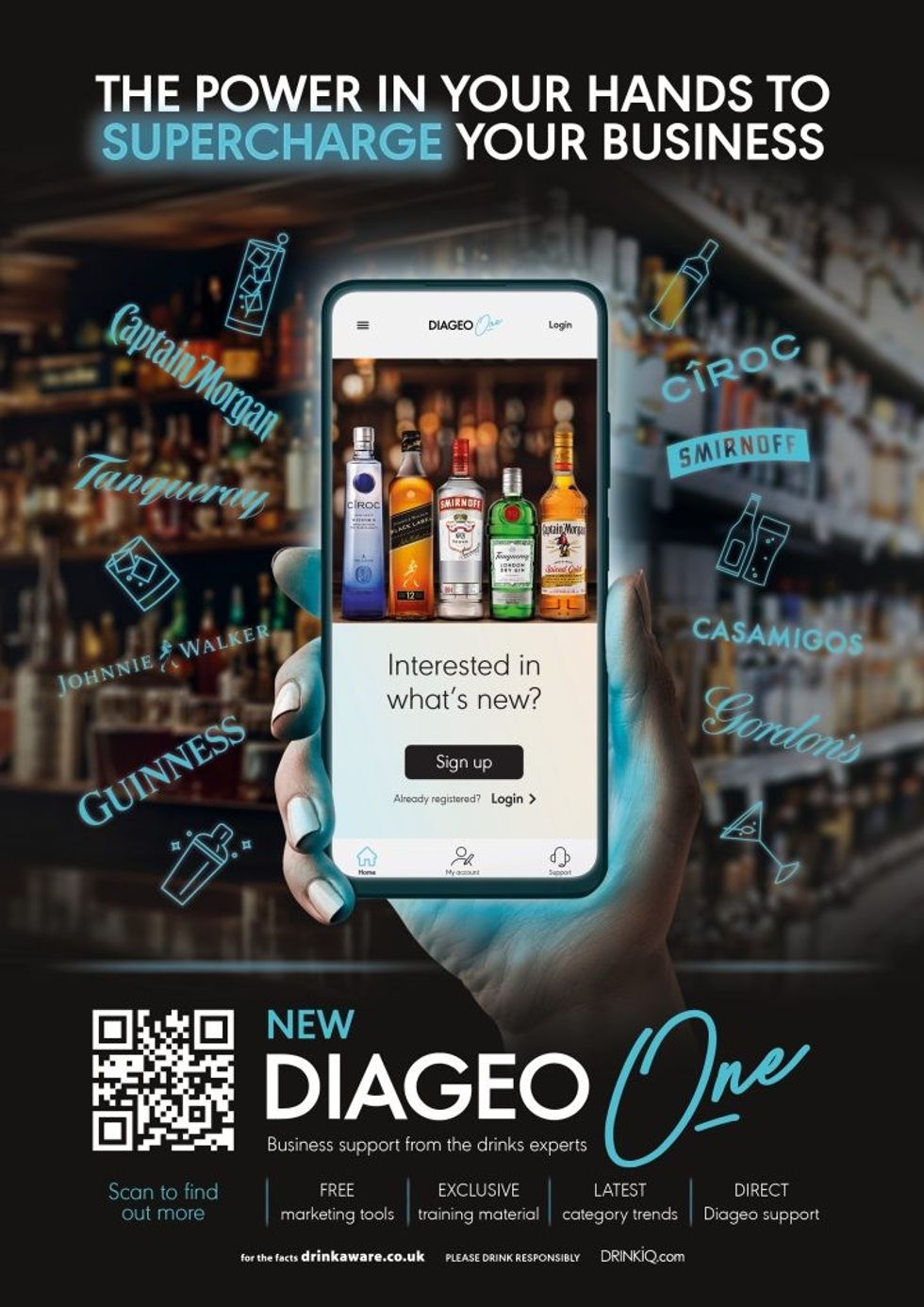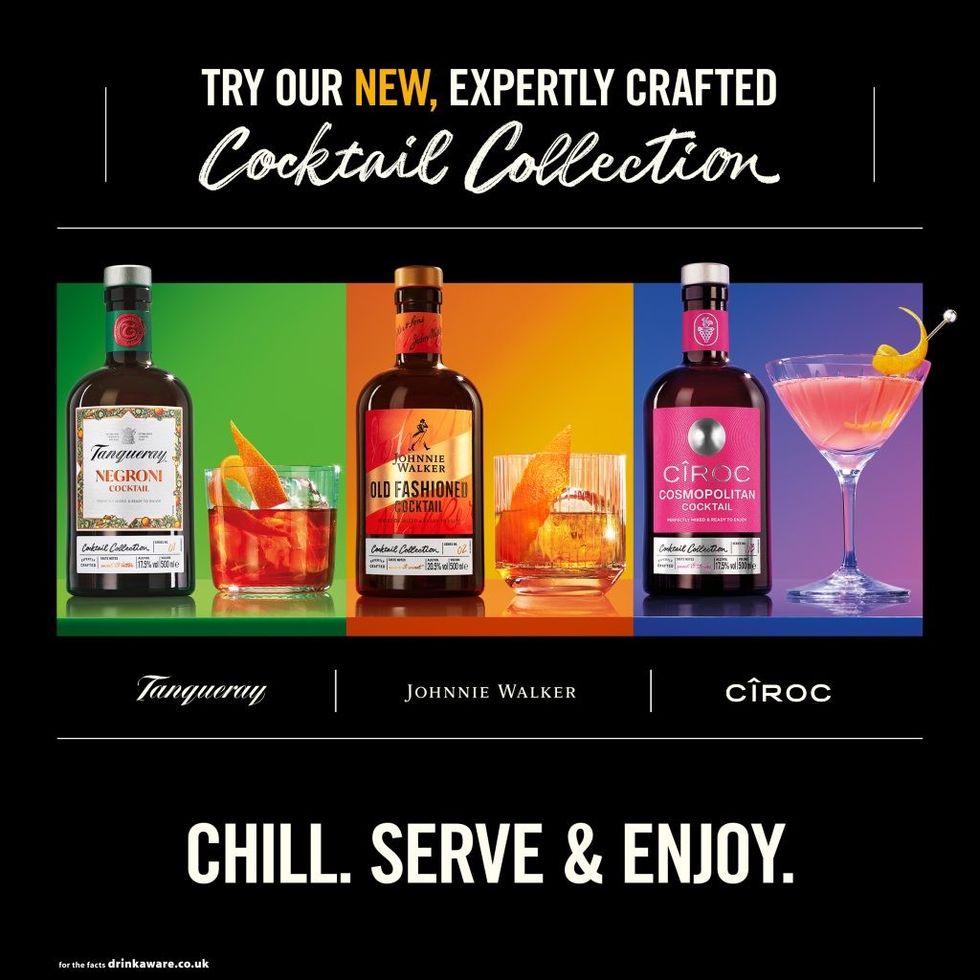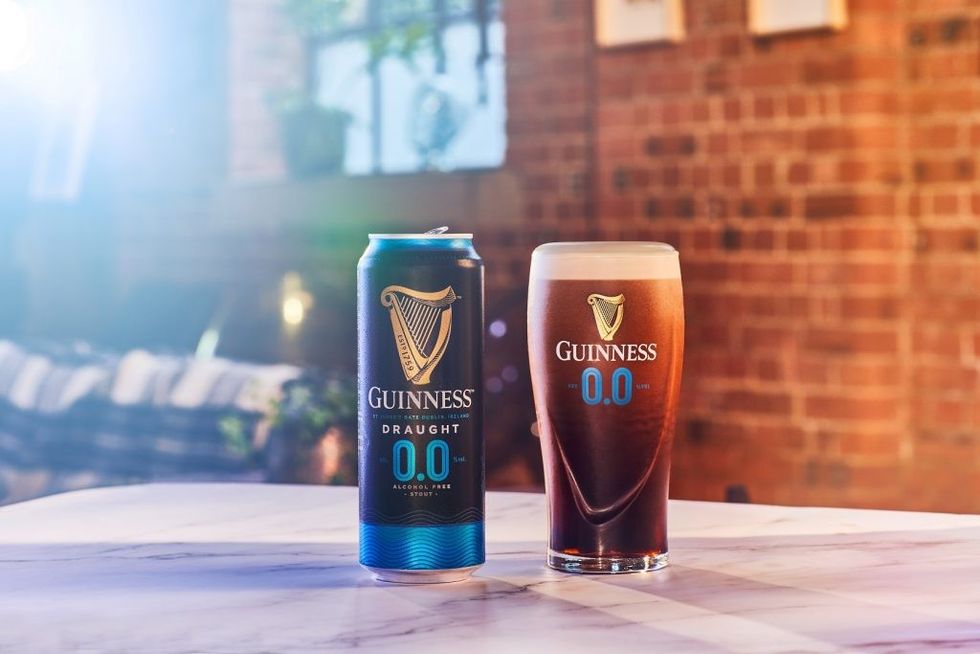Diageo’s James Halliday has worked across the grocery industry and brings a laser focus to the delivery of Diageo brands to the indie grocery channel.
Diageo is one of the “big boys”, one of the top two or three spirits companies in the world, operating in 21 geographically based markets around the globe and selling in over 180 countries, with revenue and assets in the tens of billions of pounds sterling.
It’s 200-plus brands are names to conjure with, among them Guinness, Smirnoff and Ciroc, Baileys, Captain Morgan, Johnnie Walker, Tanqueray and Gordon's.
And what’s more it’s British, with headquarters in Great Marlborough Street in London, just opposite and down the street from another great UK institution, the department store, Liberty.
The Diageo HQ is an impressive thing in itself, with a subterranean “laboratory” bar set-up, and a real one in the adjacent building where you can actually drop in for a drink – all-round impressive.
Likewise impressive is the man at the company most relevant for the convenience channel: James Halliday, who since 2019 has enjoyed the title of Senior Commercial Director Diageo GB Take Home – Diageo's term for the off trade.
James brought with him to the Diageo position a very wide range of commercial experience, having covered many of the FMCG sectors in a an extraordinarily varied career
“I've been working in consumer goods industry now for just over 20 years,” he reflects. “I started off as a graduate trainee at what is now Kraft Heinz, but 20 years ago, it was Kraft Foods, and owned brands like Kenco Coffee, Bird’s Custard, Philadelphia cream cheese, Toblerone, Terry's Chocolate – a whole spectrum of classic brands, and I worked in lots of different categories from chilled and hot drinks and confectionery to biscuits – just an amazing grounding.”
He worked in several different commercial roles there, from strategy and planning to category development, but largely in account management-type roles, “and worked my way up and through. I was there for about nine years. Kraft acquired Cadbury's, and the business then became Mondelēz, which is still an amazing business today. I had the pleasure of working in that business for about two years before moving into the world of health and beauty and joining Johnson and Johnson.”
There, James headed up Field Sales, the Tesco account, and the pharmacy and convenience channel. “I've always worked throughout my career with lots of independent operators and wholesalers, and I know that side of the business very well,” he says.
After J&J there was a stint at Beiersdorf (Nivea, Elastoplast) as Grocery Sales and Revenue and Category Growth Director, before he was head-hunted by Diageo and introduced to the wonderful world of high-quality alcohol brands.
“So, I now had the opportunity to work in the drinks industry, which I think is a fantastic industry. I had a lot of affinity with the brands, and with the fantastic reputation that Diageo has, as being an amazing employer,” he says, adding that Diageo is “obviously very important to the independent channel”.
New directions
The subject today is Diageo’s relationship with the independent and impulse channel, which has been impacted by many positive market changes in the off trade (sorry, “take home”!) since the lock-down and the closure of pubs, the ongoing craze for home entertaining and the Big Night In – extended after COVID by the cost-of-living crisis – and the general trend towards premiumisation: a more discerning consumer market that encourages leading firms such as Diageo to experiment and innovate.
Recently Diageo has transformed its Diageo One website, previously aimed at the wholesale sector, and tailored it afresh as a hub to help independent retailers, signalling a choice by Diageo to really invest its time and resources into the convenience channel. It’s partly a result of the changes just mentioned, and partly a drive to change the off-trade landscape, as Diageo visualises the potential of the new market the convenience channel serves and strengthens its relationships with retailers.
“We've done studies across 1000 independent retail shop owners, working very closely with the ACS to do so, to understand what their challenges are, what their needs are, what they want from big supplier, from wholesalers,” says James.
“What are their concerns? How do they want support to try and grow their business? That's really where we want to play a much bigger role, and all of our thinking and strategy has been about how we build a much closer partnership with those independent convenience stores, how we provide them with the right advice around ranging, merchandising, innovation, how to showcase and promote the category, ultimately to grow their sales and grow their businesses and grow the category.
And that's exactly what Diageo One is designed to do.
“You're right,” he agrees, “it was very much on-trade focussed previously, but we have now launched it into the convenience channel as well. And that is, again, designed to give ranging advice, merchandising advice, innovation advice, it's a one-stop-shop for retailers to visit, and discover how they can work with Diageo to understand the category better to grow their business.”
The off trade dropped back a little after COVID as previous shopping patterns were re-established and life got back to business as usual: "That's partly because it accelerated so massively during COVID and you had gin growing at an even faster rate, so we're just seeing a normalisation."
But new habits had been forged in lockdown and have led to concrete cultural changes.
“If you look at if you look at the long-term trends of the alcohol category, what we talk about in Diageo is people drinking less but drinking better," says James. “People are moderating more and there's lots of macro health trends. They are tending to make better choices, drinking better quality drinks, and the category is premiumising.
As a result of this, he happily admits that the likes of Guinness, Tanqueray, Gordon's are "absolutely flying, performing incredibly well”.
The outgrowth of the home-drinking revolution has partly been premiumisation, which is good for spirits (and Guinness, with stout now the most popular beer). But also good for spirits has been the home barista phenomenon, and the taste for cocktails generally that has spread far and wide. That has supercharged the on-the-go RTD category as people commute or travel around, and especially now as picnic and barbecue season approaches. It has also led to development of bar-quality ready-to drink cocktails, a trio of which Diageo has recently launched.
“I think the opportunity that we have within the off trade is to do with the fact that people are still not super confident about making great mixed drinks at home,” says James, and he believes that setting the conditions for people to enjoy more home cocktails is what will fuel demand.
“You can argue that even the gin boom was massively supported by the mixers boom, all the Fever Trees and premium, exotic mixers that started to show up, where suddenly people had much greater confidence in how to make a fantastic gin and tonic at home. You would not believe the number of people who didn't feel confident in doing that.”
This is where the new classic cocktail bottles come in – in both cans and 500 ml, five-serve bottles: a Johnny Walker-based Old Fashioned, a Tanqueray Negroni and a Ciroc Cosmopolitan.
“It's about how we help to give consumers the confidence to make great drinks and mixed drinks at home: really simple serves.”
In fact, it’s a clever mix of simple (to make) but sophisticated (in taste, ingredients and image).
“There's been a real boom in flavoured spirits and in flavoured mixers as well, because people are wanting to experiment, they want something exciting, something new,” James enthuses. “You mentioned RTDs earlier and that is absolutely where they also come in. Because that's even easier. You literally just have to pour and drink. And you get an amazing bar-quality cocktail or mixed drink at home. And that's what consumers are wanting, especially during a cost-of-living crisis.”
It is indeed a considerable saving for the consumer, not only on the on-trade price, but even buying individual ingredients oneself, especially considering wastage of citrus fruits and mixers and bottles that might not end up being finished. The ready-to-serve model can be an attractive economic proposition with quality ensured.
James has mentioned the gin revolution, which feels as if it has been ongoing for at least a decade, showing no signs of flagging. But everybody is wondering what the next wave will be – rum (a contender for some time now) or perhaps tequila.
"We're trying to inspire consumers around some great service that you can have with rum or with tequila," he reveals. “Because again, we want consumers to have as much choice as possible when it comes to spirits, and that's the beauty of our category. It is incredibly versatile. You can make so many different types of drinks and that's where we want to give consumers the confidence. For example, with tequila we've seen a big boom in places such as the USA and Australia, again with some similarities to the UK market.”
It’s tequila for-the-win, then?
"We see tequila coming as the next wave of spirits growth, and it's already doing so – although still on a relatively small scale, and it is growing much more within the on trade, especially in premium on-trade outlets through fantastic cocktails, such as the margarita Paloma.
“We see it as really exciting, and the beauty of the Paloma is, it's very simple. You can make it with a tequila, and a great pink grapefruit soda. So again, a bit like a gin and tonic – a two-part serve and very easy, which is why we believe that will be a good growth engine for the category. A margarita is a little bit more complex, but that's booming in the cocktail bars and I've seen loads of people starting to make them at home as well, because again, it's relatively simple to make.”
Diageo is well prepped with tequila labels. “Yes, we have brands like Don Julio, Don Julio 1942, Casamigos, which are performing incredibly well. We're aiming to support those brands more within the off trade as well as the on trade.”
Drinking but not drinking
At the intersection of the healthy macros and the sophisticated / premiumising trend is the incredible growth of low and zero alcoholic drinks – and this is totally relevant for the revenue of convenience retailers because it is a market that has been woefully underserved or at least under-merchandised everywhere, not least in the multiples, despite ballooning demand and great potential for sales.
“The non-alcoholic category is just fantastic,” James says. “I think it's so exciting. I'm a consumer myself of non-alcoholic Guinness. My wife drinks Tanqueray zero. I drink Captain Morgan zero because I'm quite a big rum and whisky fan.
“I'm one of those consumers who is in that camp of premiumising but also is making sure I enjoy some more moderation when it's appropriate as well. What we're finding is that most of the people in the non-alcoholic category are TBA [total beverage alcohol] drinkers and will also be consuming both the alcoholic Guinness for example, and the alcoholic Tanqueray brand.
“Let's say you get a really hot Tuesday evening or something. You come home from work, and it's a Tuesday, so you reach for ‘Captain Zero’ and still feel like you're enjoying that celebration, that relaxing moment at home, in the hot weather. And I think that's where the category is really tapping into that consumer insight and really booming.
James says that in terms of the growth opportunity, the zero-alcohol category versus TBA is still relatively small, so there is still much headroom: “If you look at markets like Spain, for example, non- alcoholic beer is a much bigger proportion of the market than it is in the UK, and similarly with spirits.”
Diageo is sure that household penetration is definitely not yet where it can be, which is why there's so much excitement about the future growth of the category. “And for the independent operators who are your readership, the category there is really underdeveloped. And Guinness zero is now the number one non-alcoholic beer in the trade, but the distribution of it within the independent channel is still relatively small.”
Part of the problem is simply ranging and chilling appropriately and visibly. People need to be able to see and grab a zero beer when they reach for their normal four-pack (because, as James says – and I can vouch for this – most people will consume both on different occasions and even at different times during the same evening).
Unfortunately, zero-alcohol brands are under-represented and often not even chilled, because retailers lack knowledge or confidence in the sales potential.
“This is this is exactly why we're putting more resource into the independent channel both through Diageo One, but also through our Field Sales coverage, our telesales coverage, working with our wholesale partners, because this is exactly the kind of insight and support that the independent operators need” says James.
“We know that there is a high percentage of shoppers coming into convenience stores who would pick up a Guinness Zero product if it was in a chiller and they would then also pick up potentially an alcoholic Guinness as well or a lager, or an RTD or whatever it may be.”
The solution here is to encourage – by clearly labelling and identifying – the facings of zero alcohol skus.
"If it's not in the chiller and it's not ranged, they're just going to pick up one four-pack and the retailers are missing out. That's what Diageo One is designed to do, to give people advice whether you're this type of store, in this type of location, if you have these usual types of products, you should also be stocking this kind of range and have it in the chiller. And that's exactly how we want to grow the independent operators’ businesses, and Diageo One is a fantastic vehicle to talk to them about that.”
Diageo is just now rolling out a “blue zone” concept in multiples, where it is crystal clear that zero-alcohol drinks are ranged, to encourage recognition and choice by consumers.
That is not so easy in the more cramped confines of a c-store, where alcoholic and non-alcoholic versions of the same brand might be better off next to each other.
"Within the convenience channel,” James explains, “if you're in a certain type of area, and have certain demographic, there might be a time where you need a specific non-alcoholic area potentially on the chiller. For the time being, in a lot of stores that won't be quite developed yet. So, if shoppers are going in to buy Guinness and the non-alcoholic Guinness is next to it, it’s more likely they will pick up both.”
My next question is whether zero beers and spirits will get more promotions.
“As manufacturers and suppliers, we have the same promotional programme on zero that we do on the alcoholic products," James answers without hesitation. “In the independent channel, one thing that we want to do is work with business owners on how we get the execution and the communication so that it's very easy for shoppers to find and see in-store.
“Again, if you think about Diageo One, what independent operators can do is order point of sale [promotional items] from there and they can get the marketing communications. We can talk about the right times of year, seasonal times, when we're going to be putting Guinness on TV and actively promoting Guinness zero and say now's the time to really highlight and put the promotions on.”
The convenience edge
Suppliers are always speaking about how much they respect and admire the indie channel, but do they really mean it? Certain conglomerates did not hesitate to cut indies out of the loop when lockdown began, for example, as they prioritised their big supermarket customers.
Does James think Diageo has cracked it with Diageo One and truly designed something that can be a the “hand around the shoulder” of the indie?
“Independent operators are used to doing this kind of stuff," he replies. “They're used to working with big suppliers on different categories in order to maximise their sales. There's a reason why the big retailers spend millions and millions of pounds on data and insights to look at merchandising, look at ranging, get it right, because it's proven to significantly improve sales.
“But if you're a convenience store owner, where do you get that data from? Where do you get that insight from? How do you know what to do? Well, that's where the Diageo can come and help, ideally through a physical visit – we'd love to be able to cover every single convenience store in the land – but unfortunately, we haven't got the resources quite to do that, so we also have Diageo One.
“We are going to be looking at things like retailer loyalty schemes, reward schemes, that is something we are developing in the background as part of Diageo one, so that people can interact directly with Diageo to get the best offers and the best deals, because ultimately we want the consumers to be winning and getting great value through the convenience channel, which ultimately drives those business owners’ categories.”
It sounds as if the outlook for the home bar and the c-stores supplying it is very rosy. And look to the margarita Paloma for sales this summer. You heard it here first.








